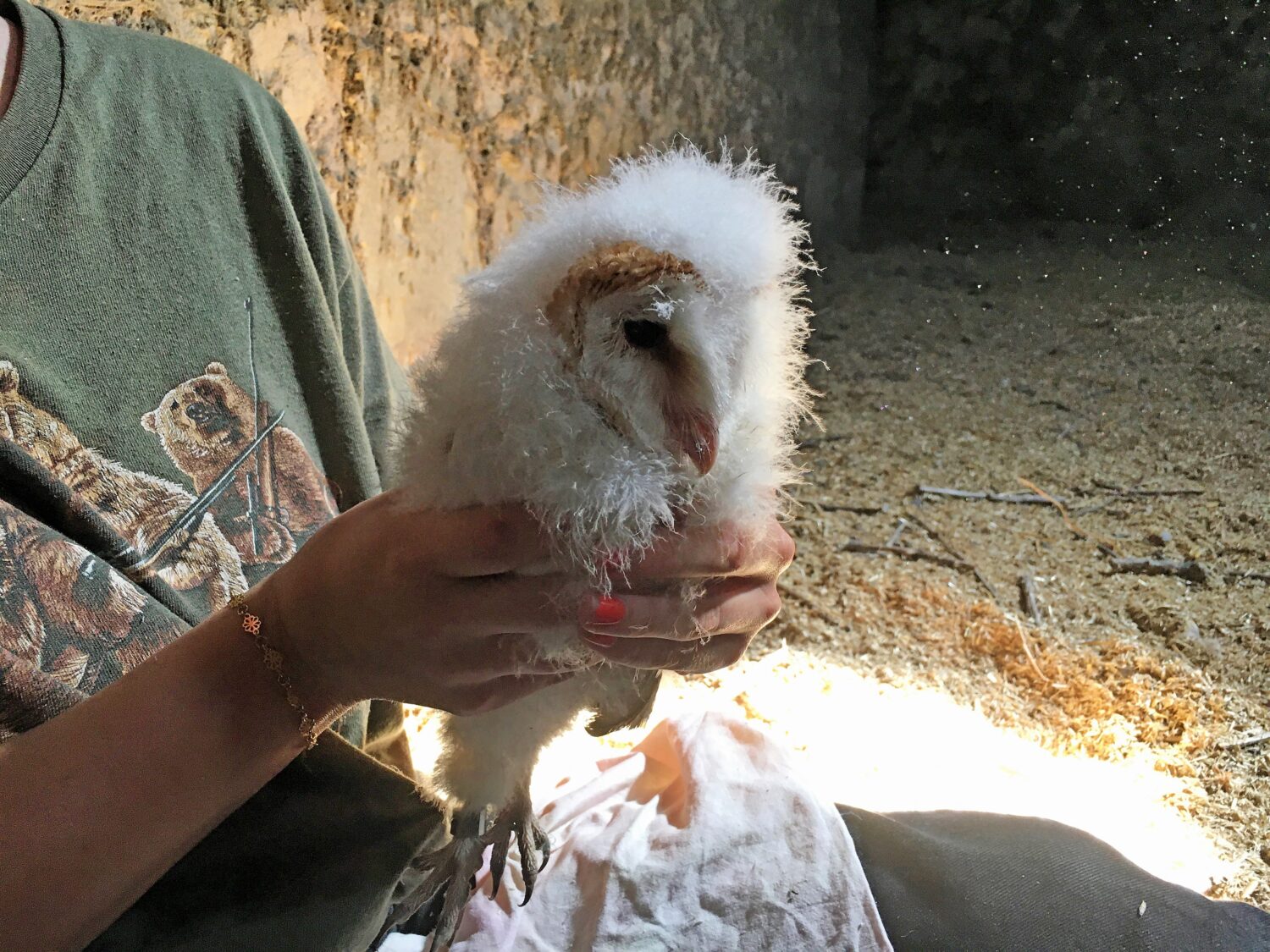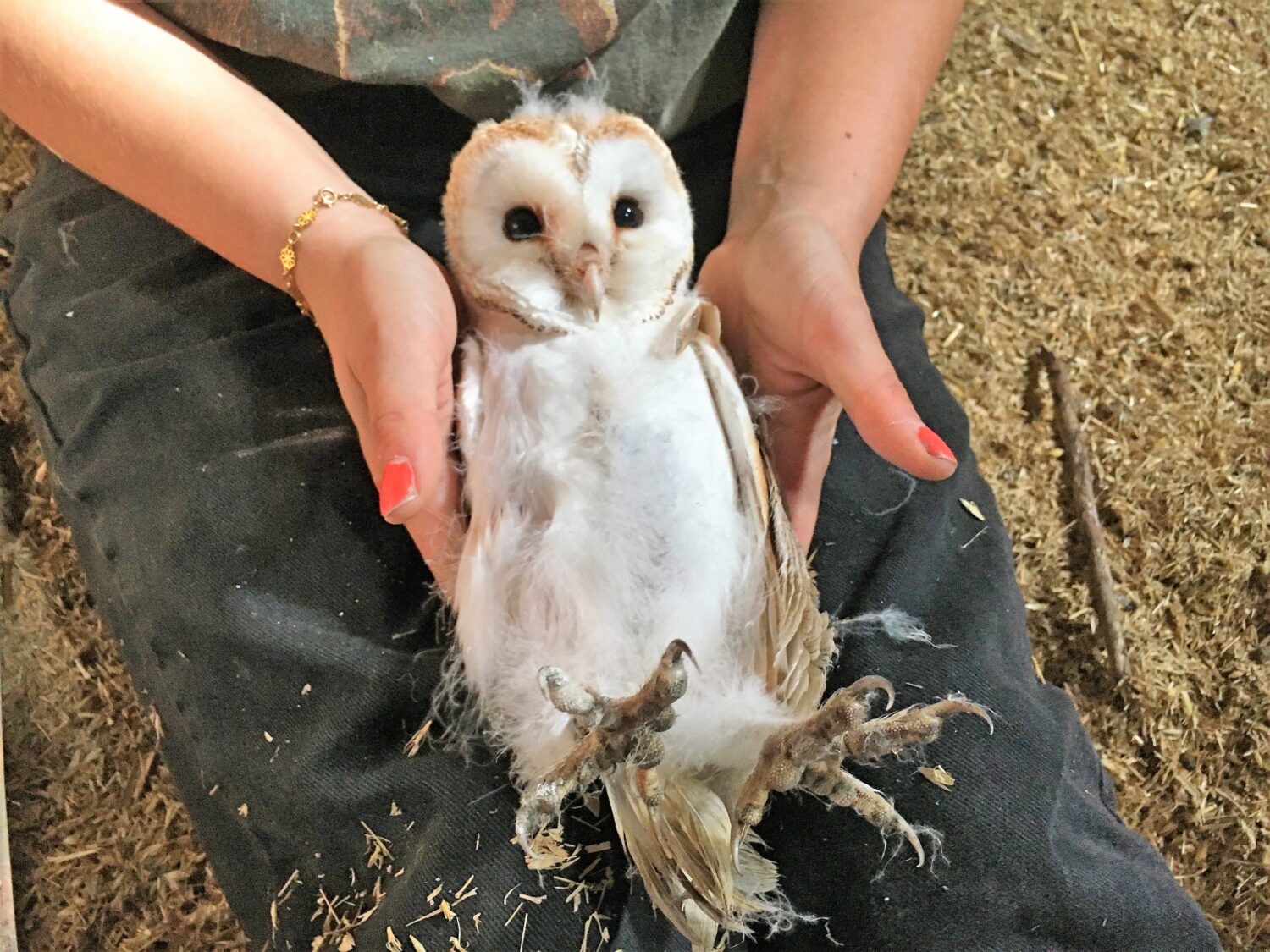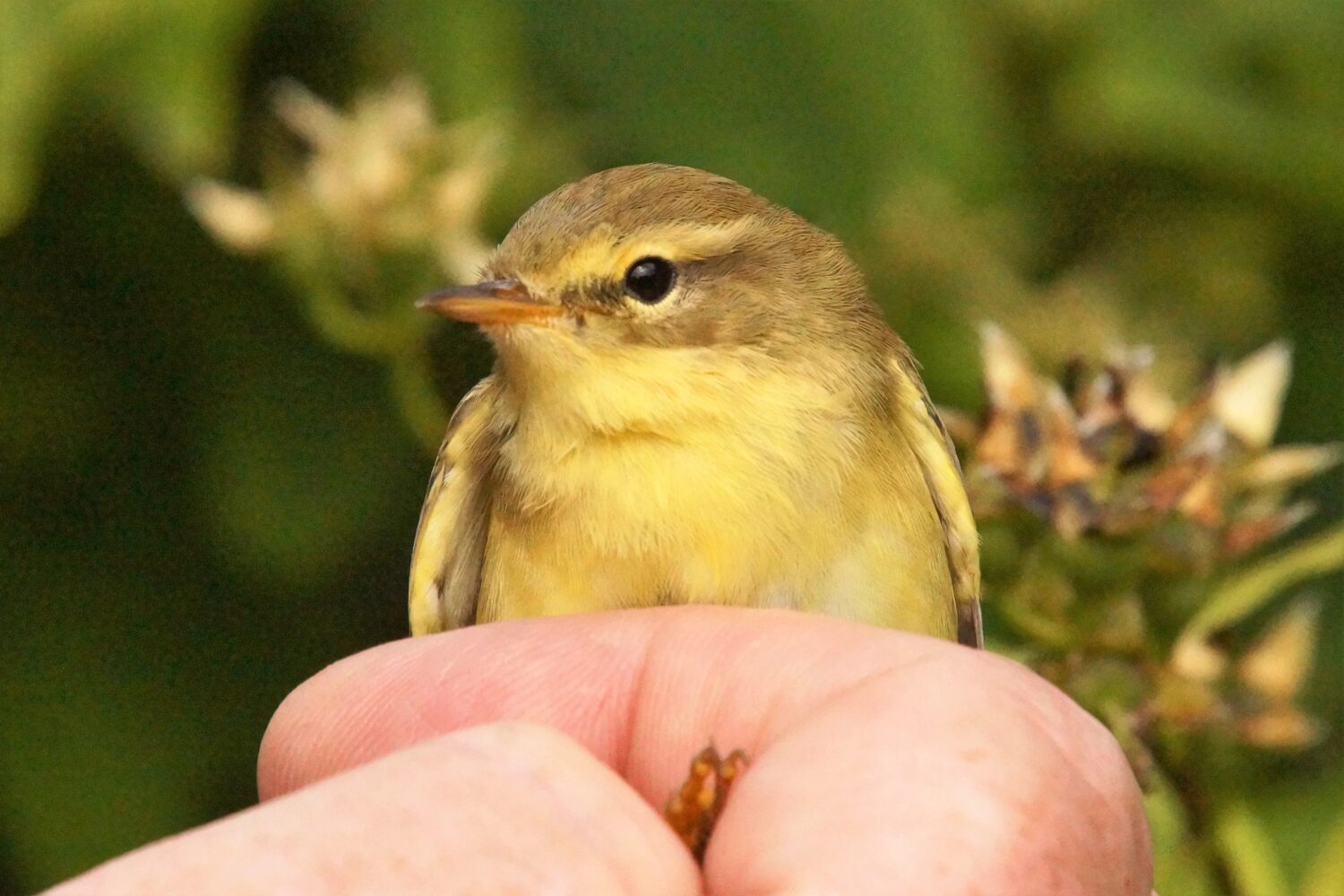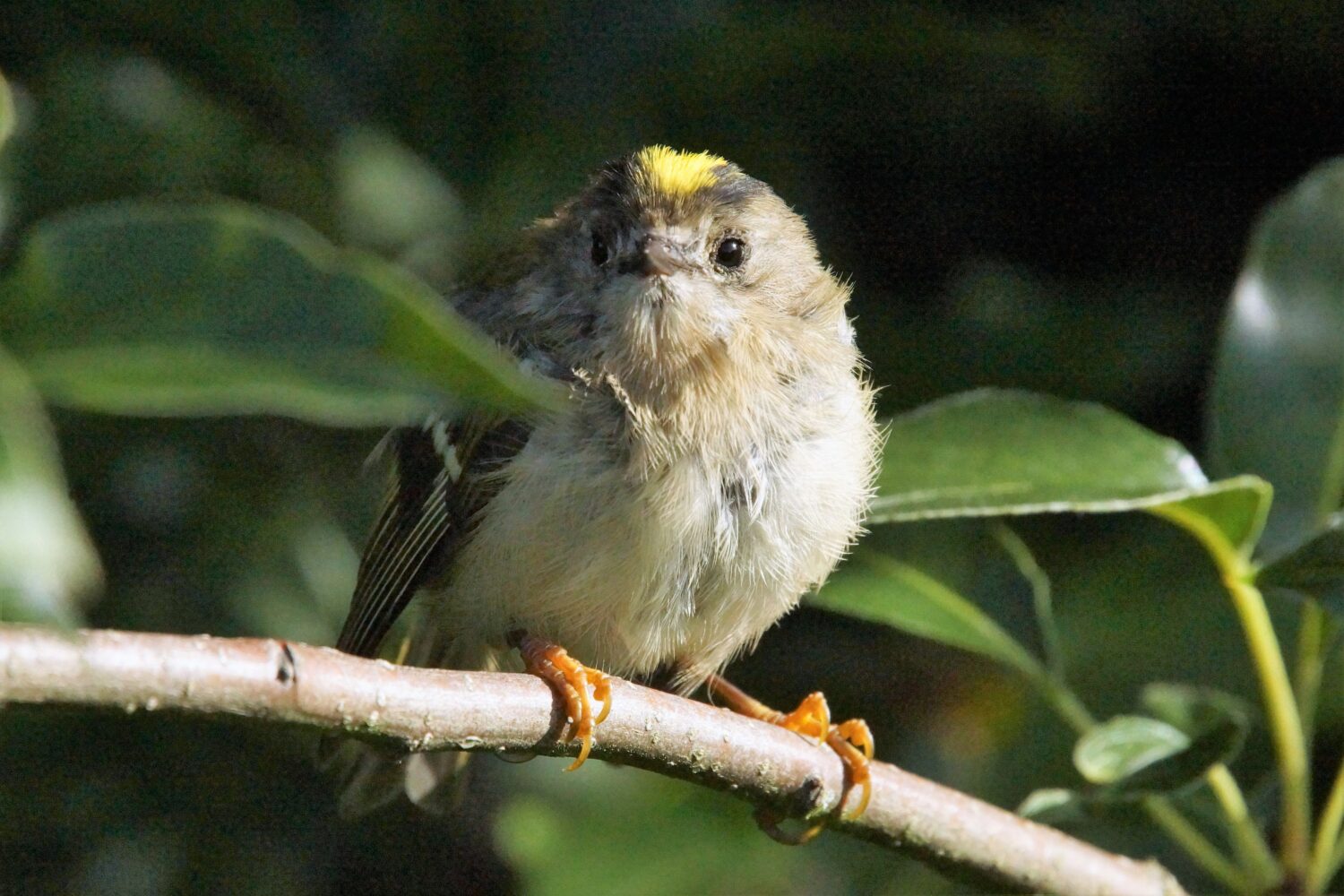Local ornithologist, Phil Hanmer recounts a month of ringing efforts in Ringer’s Year August 2023
First a correction; I reported last month on Barn Owl ‘GV65409’ originally ringed by one of my trainees in its nest near Longhorsley in 2017. I said this had been found dead a few miles to the east but in fact this male owl had been controlled alive by a fellow ringer roosting in a tawny owl box. Perhaps this 6 yr. old owl will breed next year. Back in July we had returned to a nest box in an old granary near Warkworth to ring some owlets – we found two and only one was big enough to ring. In this situation the smaller chick often dies before fledging, as the larger one gets first helpings of prey items brought in by the adults. However, going back again on the 7/8/23 it was gratifying to find that both young owls were growing well and could be ringed (see photos showing the differences in stage of development). In addition, the quick reactions of one of my C Ringers led to the capture of both the adult owls as they tried to make an exit though the low door of this stone building. The female (GK410460) is an old friend having been handled first in 2016, when she was already an adult, at this same location. In May this year she had five eggs and is probably 8 or 9 yrs old. The male was a new bird to us but is now FH79950 and he may be about five years old. In another box, at a rather more remote location north of Wooler, a parallel situation has occurred and I am pleased to report that checking again at the end of August proved successful with a second owlet ready to be ringed. Here we know the Male owl is at least 7 yrs old and the female is 5 yrs old.


Still fighting the weather and unreliable weather forecasts, we have continued to ring at Howick Arboretum. On the 6/8/23 we captured 49 birds (38 new and 11 retraps) with two of the Coal Tits originally ringed in 2021. Most of the new birds were very juvenile (probably hatched close-by) including two Willow Warblers; four Goldcrests a Blackcap, a Chiffchaff and a Garden Warbler. The rest of the birds were made up of local tits and a couple of Robins.


We were next able to ring on the 11/8/23 when we captured 45 birds (38 new and 7 retraps). The new birds included one each of very juvenile Willow Warbler, Chiffchaff and Blackcap; all of which will migrate away from the site in the next month or so. On the other hand the juvenile Nuthatch and Treecreeper we also ringed will probably stay local. The session finished early due to strong winds. This was not before the Head Gardener at Howick had brought me sad news of the finding of a dead adult Barn Owl with the ring ‘GY34839’. Looking this up later I found it to be a three year old female owl that nested successfully in a tree box close to the gardens in June 2022 when she successfully fledged one young (despite jackdaws doing their best to block her in her nest site with sticks!)
The weather relented again for us to ring on the 25/8/23 when we captured 57 birds (49 new and 8 retraps). The Coal Tits again included a bird originally ringed as a juvenile in 2021. As well as two very juvenile young chiffchaffs there were also two Blackcaps. These were birds that had been hatched this year but were much further along in their development than most of the juveniles we had been seeing up to this point and appeared to be young birds already on their first migration towards North Africa (unlikely to have been hatched at Howick). Similarly, there was a new juvenile Garden Warbler also on its migration that will take it down into Africa, perhaps as far as Ghana or Nigeria; while some continue much further east and south for their ‘winter holidays’! Resident bird species captured included a new juvenile Nuthatch and a feisty juvenile Great Spotted Woodpecker.
Finally ringing again on the 26th we captured 28 birds (15 new and 13 retraps). The new birds included four young Blackcaps of which two were very young and local birds; while the other two were a little older, probably on migration and unlikely to be local. There was also a Chiffchaff that was just finishing its main moult and had the very characteristic ‘square shaped’ tail feathers of an adult bird (see photo). It would probably be migrating south towards Senegal and The Gambia soon. Included with the local tits, which made up the rest of the catch, was a new young Treecreeper, a bird which often joins up with foraging tit flocks in the winter.
We will continue to try and ring at Howick on Friday & Saturday mornings into the Autumn.